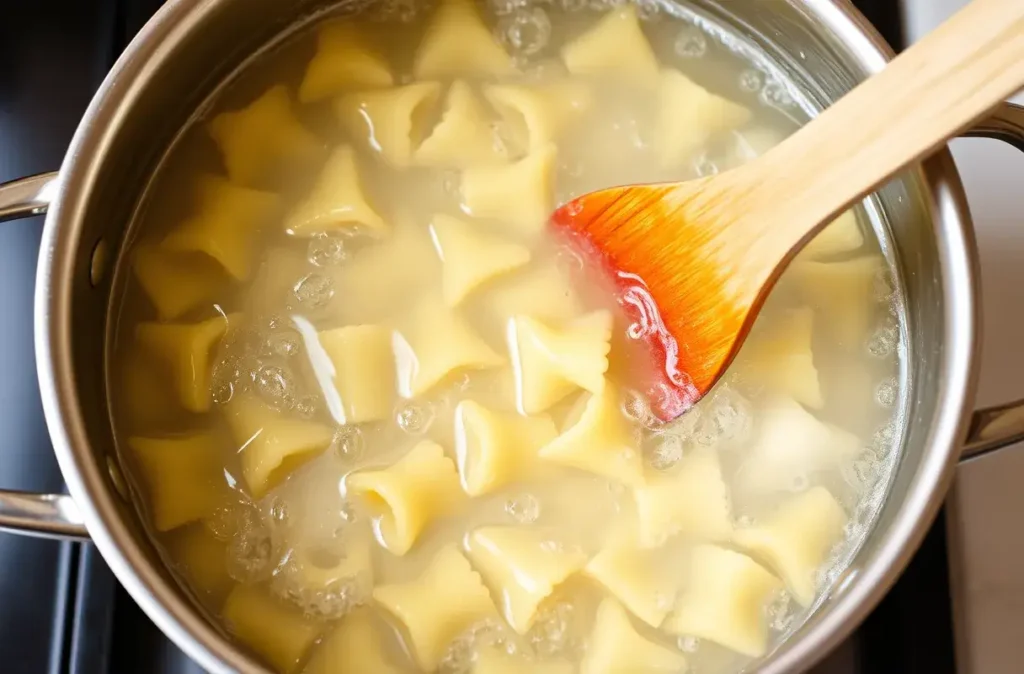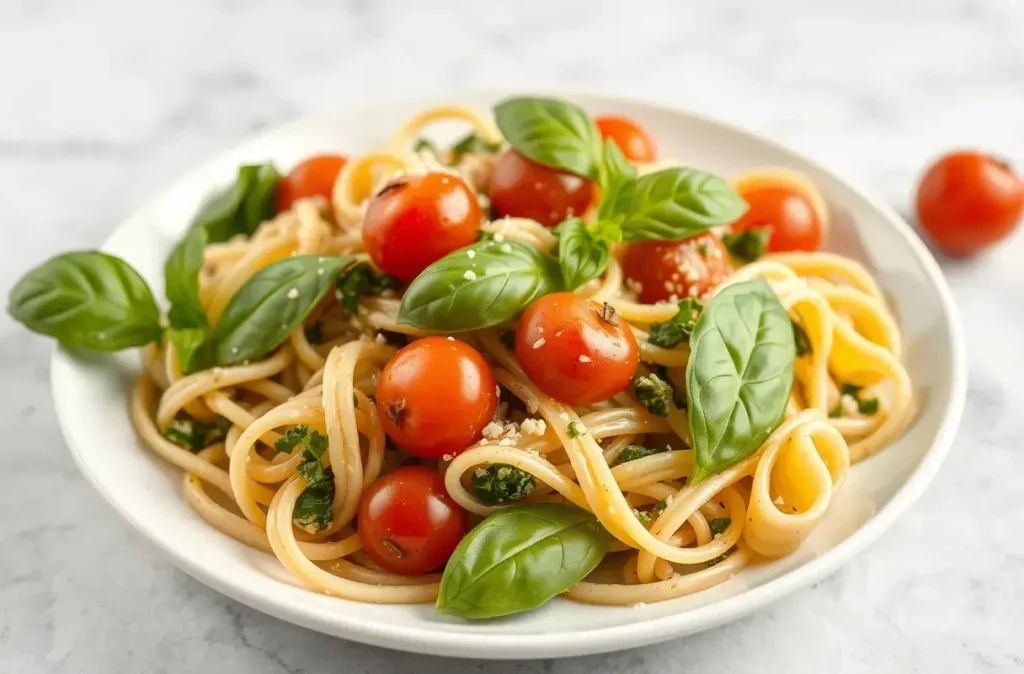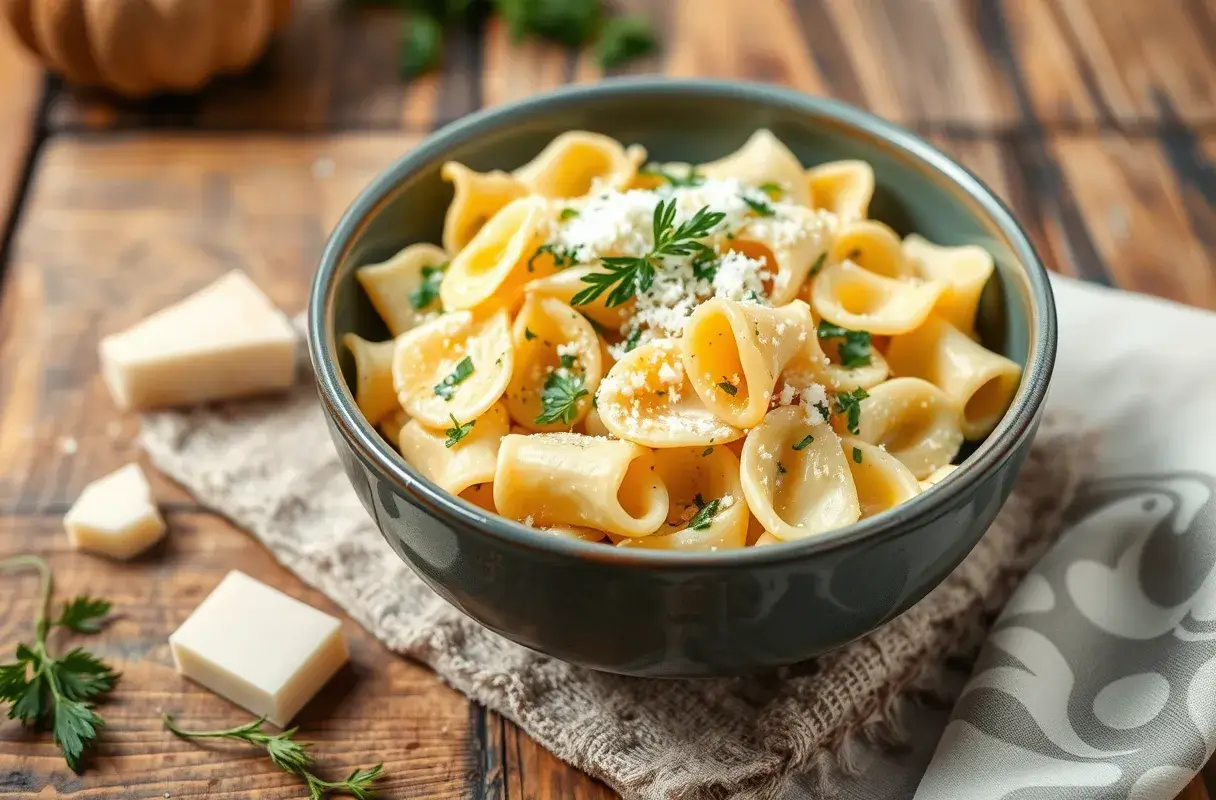Farfalle, also known as bow-tie pasta, is a beloved Italian pasta shape known for its distinctive look and versatile nature. With its origins tracing back several centuries, farfalle continues to delight pasta enthusiasts worldwide. Whether bathed in creamy sauces, tossed with a tangy vinaigrette, or paired with seasonal vegetables and proteins, this butterfly-shaped pasta adapts to a wide range of culinary expressions. In this comprehensive guide, we’ll explore its history, cooking techniques, popular recipes, cultural significance, nutritional aspects, and more. By the end, you’ll be equipped with all you need to fully appreciate and enjoy farfalle in your kitchen.
What is Farfalle?
The History
The term farfalle originates from the Italian word for “butterflies,” and its iconic shape, reminiscent of delicately pinched wings, has been enjoyed since the 16th century. Regional legends place its birth in Lombardy and Emilia-Romagna, areas in Northern Italy known for rich culinary traditions. In the pre-industrial era, pasta-making was often a family affair, with artisans shaping each piece by hand. The distinctive winged form was as much an aesthetic choice as a practical one, increasing the pasta’s surface area to hold flavorful sauces.
Over time, as pasta production shifted from small family workshops to larger enterprises, farfalle maintained its popularity. Its timeless appeal lies in its ability to bring both visual flair and textural intrigue to a dish.
The Design and Texture
- Shape and Surface: It has a characteristic pinch at the center, creating two “wings.” The ridged edges help capture sauce, while the thicker center provides a pleasant chew.
- Durum Wheat Semolina: Made from durum wheat semolina, farfalle offers firmness and a slightly nutty flavor. When cooked properly, it holds its shape and maintains that coveted al dente bite.
Common Uses
- Creamy Sauces: The delicate folds and ridges are perfect for holding onto rich Alfredo or carbonara sauces.
- Light Dressings: Oil-based sauces, simple garlic and olive oil preparations, or lemony dressings cling beautifully to its surface.
- Pasta Salads: Its whimsical shape and durability when chilled make farfalle a go-to choice for vibrant, picnic-ready pasta salads.
How to Cook Farfalle Perfectly
Preparation
- Boil Ample Water: Start by boiling a large pot of water. As a general guideline, use about 4 quarts (4 liters) of water per pound (450g) of farfalle to prevent sticking.
- Season the Water: Add 1–2 tablespoons of salt to the water. This is your chance to season the pasta from within.
Cooking Instructions
- Add Farfalle: Once the water reaches a rolling boil, add the farfalle.
- Stir Occasionally: Stir every few minutes to keep them separate and ensure even cooking.
- Check for Doneness: After 10–12 minutes, taste a piece. It should be tender yet firm—this is al dente.
- Reserve Pasta Water: Before draining, scoop out a cup of starchy cooking water. This can help adjust the consistency of your sauce.
- Drain and Serve: Drain quickly, but do not over-rinse. If you’re making a cold pasta salad, a quick rinse in cold water stops the cooking process and prevents sticking.
Pro Tips
- Taste as You Go: Cooking times vary, so rely on your taste buds to determine when the pasta reaches the right texture.
- No Oil in the Water: Contrary to popular belief, adding oil to the cooking water can prevent sauces from adhering to the pasta.
- Finishing in the Sauce: For hot dishes, consider finishing the pasta in the sauce for the last minute of cooking. This technique allows the pasta to absorb more flavor and ensures a harmonious dish.

Why Choose Farfalle?
Versatility
Farfalle’s adaptable shape is at home in both hot and cold dishes. Its textured wings catch tiny bits of garlic, herbs, or grated cheese, making every bite uniformly flavorful. Whether you serve it with robust meaty sauces, delicate seafood, or seasonal produce, it consistently delivers a satisfying experience.
Visual Appeal
The butterfly-like design offers more than just taste—it adds elegance and whimsy to your plate. Children often find the shape engaging, making farfalle a kid-friendly option. Chefs, caterers, and home cooks alike appreciate its aesthetic, as it elevates the look of even the simplest preparations.
Popular Farfalle Recipes
Vegan Farfalle Primavera
Filled with colorful vegetables like zucchini, bell peppers, asparagus, and peas, this vegan dish uses olive oil, lemon zest, and fresh herbs for a bright, clean taste. It’s a healthy and vibrant meal that celebrates fresh produce.
Creamy Chicken Farfalle
This comforting dish combines tender grilled chicken with a rich sauce made from cream and Parmesan cheese. A sprinkle of parsley and black pepper adds a restaurant-quality touch to this easy weeknight meal.
Pesto Farfalle Salad
This light, refreshing salad features farfalle mixed with fresh basil pesto, cherry tomatoes, and mini mozzarella balls. Serve it chilled at picnics or potlucks—it’s sure to be a crowd favorite.

Cultural Significance and Global Adaptations
Farfalle began in Italy, but people around the world have grown to love it. In Italy, cooks often serve it with creamy or light sauces, showing their respect for simple, balanced flavors. As pasta spread to other countries, home cooks and chefs tried new ways to enjoy it.
In the United States: You can find farfalle in chicken Alfredo dishes, in Mediterranean-style salads with olives and feta, or baked in warm, comforting casseroles.
Throughout ItalyEastern Europe: Cooks often toss it with mushrooms, onions, and a bit of sour cream, using foods that are common in their own kitchens.
In Asia: Farfalle is sometimes mixed with soy-ginger dressings, chili flakes, or stir-fried vegetables. This shows how pasta can fit into many different cooking styles.
Because it adapts so well, farfalle has earned its place on tables everywhere. Its shape crosses cultural lines, appealing to people in many parts of the world.
Nutritional Considerations and Health Benefits
While farfalle is not a “health food” in the strictest sense, it can be part of a balanced diet. Made predominantly from durum wheat semolina, it offers complex carbohydrates, moderate protein, and essential minerals.
Basic Nutritional Profile (per 2 oz. / 56g dry)
- Calories: Approximately 200 calories
- Carbohydrates: Around 40 grams
- Protein: About 7 grams
- Fiber: Approximately 2 grams
- Fat: Typically less than 1 gram
Health Tips
- Portion Control: Stick to recommended serving sizes and balance your plate with lean proteins and vegetables.
- Whole Grain Options: Whole wheat farfalle is available and offers more fiber, vitamins, and minerals.
- Gluten-Free Varieties: For those with celiac disease or gluten intolerance, gluten-free farfalle made from corn, rice, or legume flours are increasingly available.
Pairing with Nutritious Ingredients
Combine farfalle with nutrient-dense foods to create a balanced meal:
- Lean Proteins: Chicken, turkey, legumes, or tofu.
- Healthy Fats: Avocado, nuts, seeds, and extra-virgin olive oil.
- Fresh Vegetables: Broccoli, spinach, cherry tomatoes, and bell peppers add vitamins, minerals, and fiber.
Substitutions and Variations
If you can’t find farfalle, consider other medium-sized pasta shapes with similar sauce-catching surfaces:
- Fusilli (Rotini): Twisted spirals that grip onto sauces.
- Campanelle: Bell-shaped pasta with a hollow center and ruffled edges.
- Orecchiette: “Little ears” that form cup-like shapes, ideal for chunky sauces.
For dietary substitutions:
- Whole Wheat : More fiber and a nuttier flavor.
- Gluten-Free : Made from corn, brown rice, quinoa, or legumes.
- Colored : Natural vegetable powders (spinach, beet, carrot) sometimes color and subtly flavor the pasta.
How to Store and Preserve Farfalle
Dry Farfalle
- Pantry Storage: Keep unopened, dried farfalle in a cool, dry place. It can last up to two years if properly stored.
- After Opening: Transfer the remaining pasta to airtight containers or sealed bags to keep it fresh for several months.
Cooked Farfalle
- Refrigeration: Store leftover cooked farfalle in an airtight container for up to 3–4 days.
- Freezing: Toss in a small amount of olive oil, then freeze in zip-top bags for up to 1–2 months. Thaw overnight in the fridge before reheating.
- Reheating Tips: Warm gently over the stove with a splash of water or in the microwave at reduced power to prevent drying.
Buying Guide: How to Choose Quality Farfalle
When selecting farfalle, quality can make a noticeable difference in texture and taste:
- Brand Reputation: Trusted Italian pasta brands often use high-quality durum wheat and traditional methods like bronze-die extrusion for better sauce adhesion.
- Color and Appearance: Look for farfalle that is a rich, creamy yellow without dark specks or discoloration.
- Texture Before Cooking: Good dried pasta has a slightly rough surface from bronze dies, which helps sauce cling better.
- Organic and Specialty Options: Consider organic, artisanal, or whole-grain farfalle for added nutritional benefits and unique flavors.
Sustainability and Sourcing
The sustainability of pasta production has come under scrutiny as global awareness of environmental impact grows. Many reputable brands now implement sustainable farming practices and support local wheat growers. Some use eco-friendly packaging materials and invest in renewable energy for production.
- Check for Certifications: Look for seals like “Certified Organic” or “Non-GMO Project Verified.”
- Support Local Suppliers: Buying from small-scale producers can promote local economies and reduce transportation emissions.
- Eco-Friendly Packaging: Brands experimenting with biodegradable or recyclable packaging can help reduce plastic waste.
Creative Ways to Use Leftover Farfalle
If you find yourself with leftover farfalle, don’t let it go to waste. Transform it into new dishes that feel fresh and exciting:
- Frittata: Fold leftover pasta into beaten eggs, along with spinach, cheese, and herbs, for a satisfying brunch dish.
- Stir-Fry: Toss cold farfalle with a bit of sesame oil and quickly stir-fry with veggies and a soy-ginger sauce for an Asian-inspired meal.
- Pasta Bake: Combine with leftover sauce, sprinkle with cheese, and bake until bubbly for an easy, comforting casserole.
Wine and Beverage Pairings
The right beverage can elevate your farfalle experience:
- Light White Wines: Crisp, dry whites like Pinot Grigio or Verdicchio complement pesto or vegetable-based sauces.
- Medium-Bodied Reds: Chianti or Barbera work well with tomato-based sauces and hearty dishes like creamy chicken farfalle.
- Sparkling Water or Lemonade: For non-alcoholic options, a sparkling water with lemon or a light lemonade refreshes the palate, especially when enjoying lighter, summertime pasta salads.
Regional Variations and Serving Traditions
In Italy, farfalle is often prepared following seasonal ingredients.
During the spring, you might find it served “primavera” style with young peas and asparagus.
In cooler months, a creamy mushroom sauce or a walnut cream sauce could grace the table. Such seasonal rotations reflect the Italian culinary philosophy of letting ingredients shine when they’re at their peak.
Outside Italy:
- France: You might encounter farfalle in refined, butter-based sauces or paired with seafood like scallops.
- Argentina: In areas of South America influenced by Italian immigration, farfalle may be served with vibrant tomato-based sauces and local cheeses.
- Australia: Modern Australian cuisine often incorporates farfalle into fusion dishes, mixing Asian flavors or fresh seafood, demonstrating the pasta’s adaptability.
Equipment and Tools for Perfect Farfalle Dishes
While making dried farfalle doesn’t require special tools beyond a pot and a colander, having a few kitchen essentials can elevate your cooking experience:
- Large Stockpot: A roomy pot ensures the pasta has enough space to move freely during boiling.
- Fine-Mesh Strainer or Colander: A good-quality strainer helps drain quickly and effectively.
- Wooden Spoon: Gentle stirring with a wooden spoon prevents sticking and preserves the pasta’s shape.
- High-Quality Knife: Prepping vegetables, herbs, and proteins is easier and safer with a sharp knife.
- Cheese Grater (Microplane): For finishing touches of Parmesan, Pecorino, or other hard cheeses.
If you decide to make fresh farfalle at home, a pasta machine (for rolling dough), a pastry wheel, and a keen eye for shaping are handy.
More Recipe Ideas to Inspire You
Aside from the classics mentioned, you can experiment with various flavor profiles and ingredients:
- Farfalle alla Vodka: Replace penne with farfalle in a creamy vodka sauce enriched with tomato paste and chili flakes.
- Farfalle with Shrimp and Lemon Butter: Sauté shrimp in butter, garlic, and lemon juice, then toss with farfalle and fresh parsley.
- Mediterranean Farfalle Bowl: Combine olives, feta, artichoke hearts, roasted cherry tomatoes, and a drizzle of olive oil for a vibrant taste of the Mediterranean.
Don’t be afraid to improvise. Use what’s fresh, in season, and aligns with your personal preferences.
Farfalle FAQs
Is Farfalle the Same as Bow Tie Pasta?
Yes, farfalle and bow-tie pasta are essentially the same. The Italian term farfalle means “butterflies,” and the English “bow tie” is a more literal description of its shape Read the Full Article.
How is Farfalle Pronounced in Italian?
It’s pronounced as “far-FAH-leh,” with the emphasis on the second syllable Read the Full Article.
What Does Farfalle Mean in Italy?
In Italian, farfalle translates to “butterflies,” reflecting the pasta’s wing-like shape Read the Full Article.
What Do Italians Use Farfalle For?
Italians use farfalle in a range of dishes. Creamy sauces like Alfredo or a simple butter and sage sauce are popular, as are lighter, oil-based preparations or chilled pasta salads Read the Full Article.
Can I Make Farfalle from Scratch?
Yes. Homemade farfalle involves rolling out fresh pasta dough, cutting it into rectangles, and pinching them in the middle to create the distinctive shape. It can be time-consuming, but the results are often worth the effort for fresh pasta enthusiasts.
Conclusion
It is more than just a visually appealing pasta shape—it’s a culinary canvas waiting to be adorned with flavors, textures, and aromas. From its historical roots in Northern Italy to its modern global interpretations, It exemplifies how a single pasta shape can transcend borders and cultures. Whether paired with a hearty cream sauce, tossed in a light vinaigrette, or combined with seasonal vegetables, this butterfly-shaped pasta never fails to please both the palate and the eye. Its adaptability, elegance, and approachable cooking techniques make it a must-have staple in any kitchen pantry.
